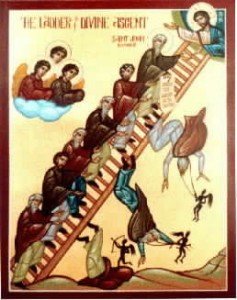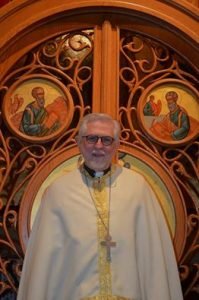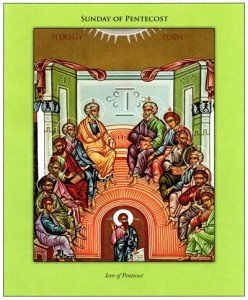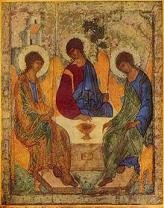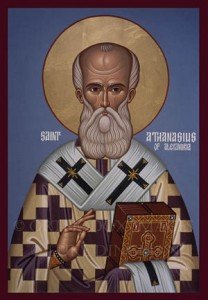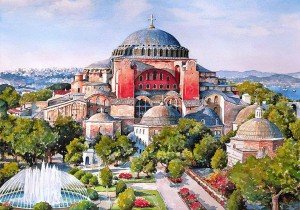![]() The history of the eucharistic service, the Divine Liturgy, can be divided into several periods.
The history of the eucharistic service, the Divine Liturgy, can be divided into several periods.
Initial Period:
The Lord’s Supper is separated from the agape and the Word service becomes permanently joined to it. This emerges in the Middle of the 2nd Century. It consisted of Readings, Preaching, Common Prayers, Kiss of Peace, Transfer of Gifts, Prayer over the gifts (Anaphora), Communion (fraction), and Dismissal.
Second Period:
This is the period of Church Orders, when written formularies, that is actual texts, first appear. All of them differ, showing that there was no one “apostolic liturgy” from which they were derived. Yet all of them follow the same basic outline first seen in Justin’s Apology, as found in the initial period.
Third Period:
After the peace of Constantine in 313, when the Liturgy became a public ceremonial of a church that was freed from civil restraints and fast becoming an important social force, liturgical development quickened. It is in this period that we first hear of the rite of Byzantium. Indeed, this rite can be said to characterize this stage of liturgical history. It is the rite of the new capital of Constantine, which was founded in 315. It inaugurates the new era of Constantinian or Imperial Christendom.
This is the period of unification of rites. New forms of worship evolved, and standardization began taking place. The particular form of worship in local churches were replaced by standardized forms in particular patriarchates. The forms of worship we find now is not a synthesis of all the various forms from the early Church but, rather, the result of a selective evolution of the forms unique to a particular group of Churches within a geographic area. The development of the Liturgy in each patriarchate was heavily influenced by the monastic communities that also developed.
Fourth Period:
In this period liturgical families continued to evolve. They were already formed as particular Churches and so the development was within a particular, established “RITUAL”.
In the East, while there was an attempt at uniformity, it never took on the same rigidity as was found in the West. Each ethnic group that embraced the ritual of Byzantium put its on mark on the ritual.

